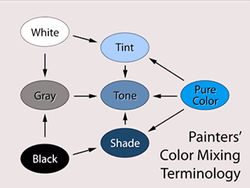
COLOURS IN
FASHION MARKETING

Conclusion
In conclusion, colours play a vital role in Marketing, Fashion and, implicitly, Fashion Marketing. ‘Inaccuracy in e-commerce’, ‘Psychological implications’, ‘Names and gender’, ‘Colours’ impact on brands’ and ‘Cultural Implications’ are some of the key issues of this industry. This is because they highly influence the attitudes and behaviour of the consumers as well as the fashion marketers who are trying to keep up with those consumers’ ‘colour demands’. Taking these into consideration, as well as the fact that the colour topic is so broadly researched (Labrecque and Milne 2012; Eliot and Maier 2014; Javed and Javed 2015), the marketing literature is using theories from other fields such as psychology (‘The Wright Theory of Colour’, ‘The Association Theory’) and arts (The ‘Colour Theory’) in order to develop its own field’s expertise.
Considering all these, the conclusion of this author’s website research on Colors in Fashion marketing is that the Fashion Marketing Industry is rich and could be further researched. As Labrecque and Milne (2012) suggest, more research could be done in regarding colour, especially nowadays when consumers demand a colour variety for their purchases, namely: gaming devices, technology (computer, mobile phones), kitchen electronics, etc. To put it differently, there is still a lot to say about colours, so for Fashion Marketers there is still a long road ahead both in the clothing industry as well as in other potential areas. After all,
“The subject of color seems to have almost endless ramifications and to touch upon life in almost every quarter, for color is rich in lore, rich in meaning and purpose.” – Faber Birren (2015, cited in Rikard).

The observational research proved that colours are still popular in fashion marketing, and that the industry is expanding especially on the virtual medium. It has also shown that there is a colour variety available both for men and women.
 |  |  |
|---|---|---|
 |  |  |
 |  |  |
 |  |  |
 |  |  |
 |  |  |
 |  |  |
 |  |  |
 |  |  |
 |  |  |
 |  |  |
 |  |  |
 |  |  |
 |  |  |
 |  |  |
 |  |  |
 |  |  |
 |  |  |
 |  |  |
 |  |  |
 |